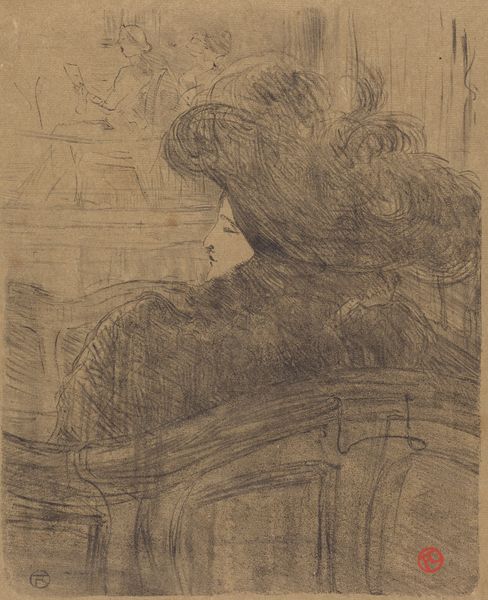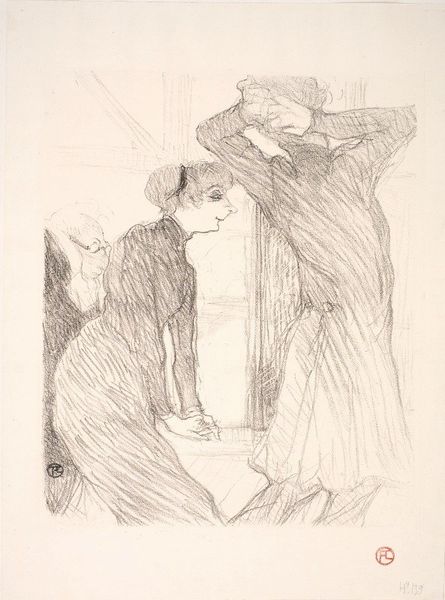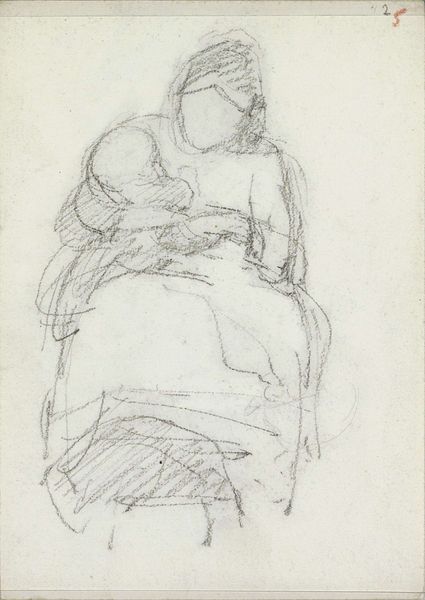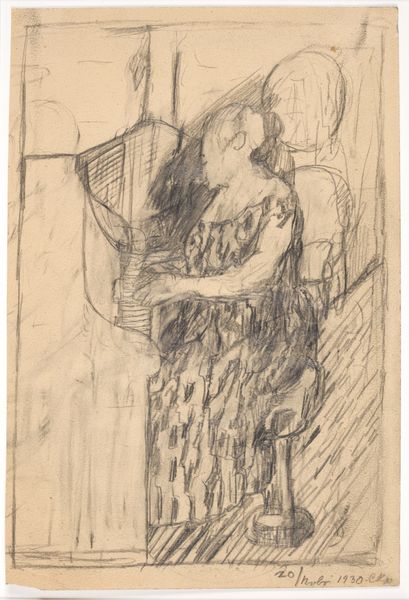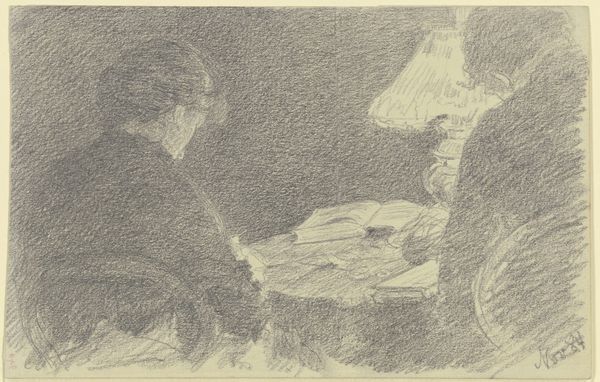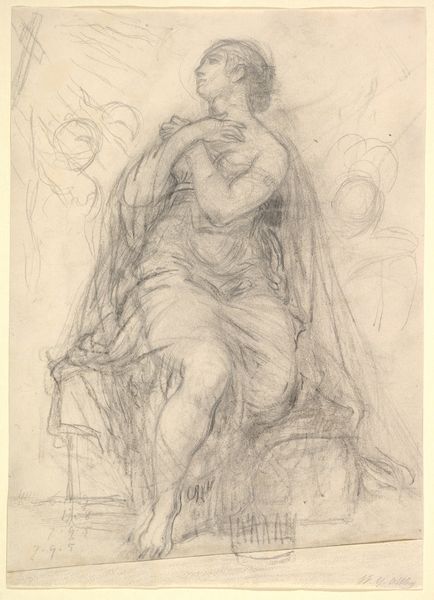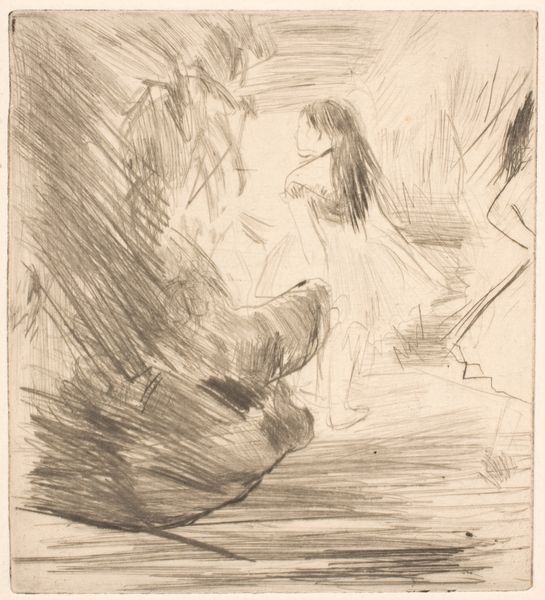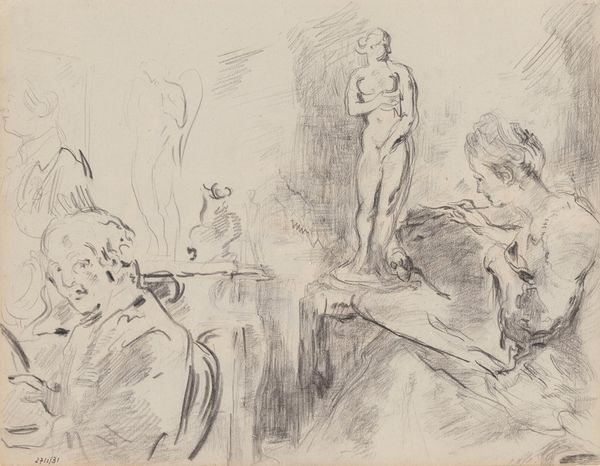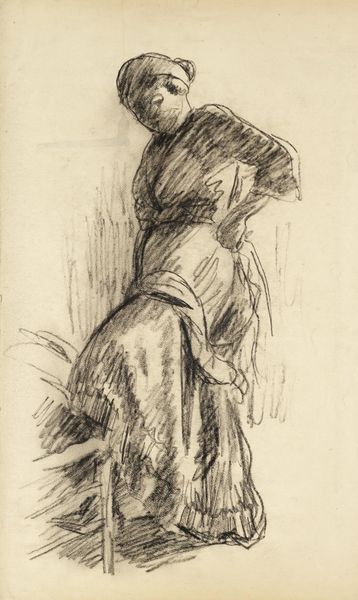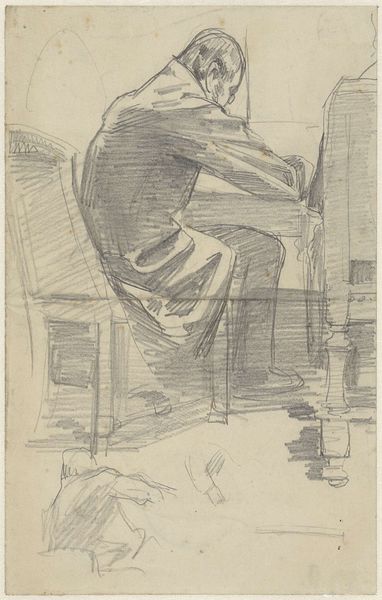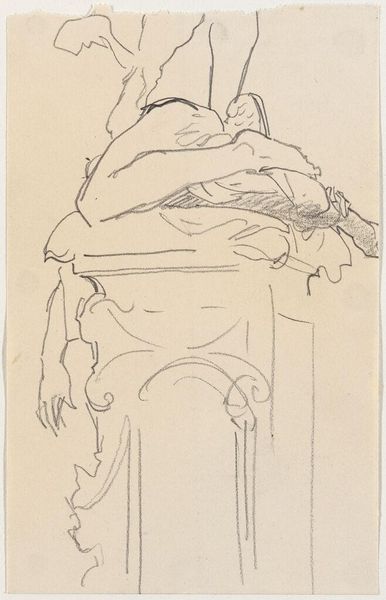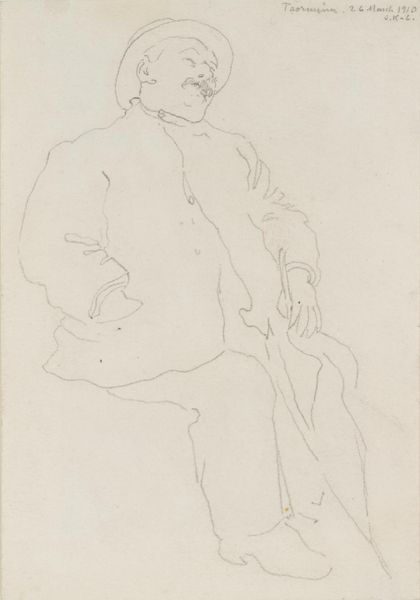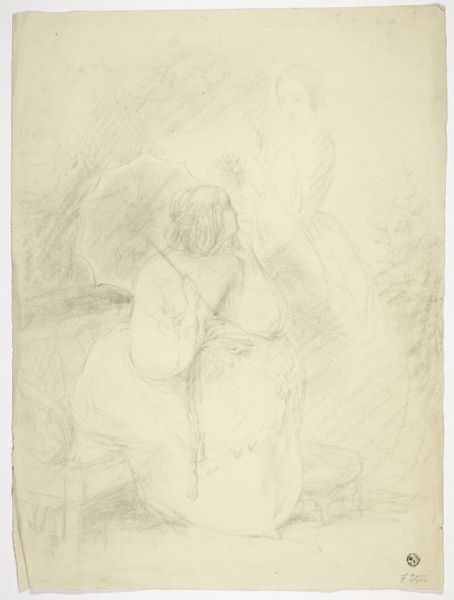
Copyright: Public domain
Editor: We're looking at Toulouse-Lautrec's "Output Theatre," a pencil drawing from 1896. It's predominantly grey. The texture gives it an ephemeral quality; like a fleeting memory. What stands out to you from a formalist point of view? Curator: Primarily, I am drawn to the dynamism created by the use of line. Notice how the varying weights and densities of the pencil strokes define form and space. Observe, too, the interesting tension established between the sketch's apparent incompleteness and its cohesive representation of a scene. The gestural quality gives us a sense of immediacy. How does the composition strike you? Editor: The figures seem caught in a moment of private contemplation, almost voyeuristic. But it’s like we are peeking into a memory of an experience as much as experiencing a depiction. Does the sketchiness detract from its overall impact, or does it add to it? Curator: On the contrary, the sketchiness is vital. The use of "sprezzatura" or studied carelessness enhances its overall impact. Lautrec captures the essence of a moment without overly laboring. By doing this he achieves an evocative atmosphere and also subtly calls attention to the act of drawing itself. Note, for example, how the figures on the left contrast in terms of execution to the detail given to the possible statue on the right of the drawing. Editor: That is such a fascinating detail! It has definitely helped me appreciate how even a simple sketch can invite a deeper look at line and texture and composition, creating this whole atmosphere of a moment, a sense of 'sprezzatura'. Curator: Exactly. By closely observing such elements, one can unlock the rich complexity within this ostensibly simple work.
Comments
No comments
Be the first to comment and join the conversation on the ultimate creative platform.
